Cheat Sheet: Governor | Indian Polity for UPSC CSE PDF Download
Introduction
This chapter explains the role of the Governor in India’s state governments in simple terms. It covers how Governors are appointed, their qualifications, powers, and challenges. The Governor is the head of a state but mostly a figurehead, with real power held by the Chief Minister and ministers.
Introduction
The Indian Constitution sets up a parliamentary system in states, with the Governor as the state’s chief executive but mostly a symbolic head. The Governor also represents the Central government in the state.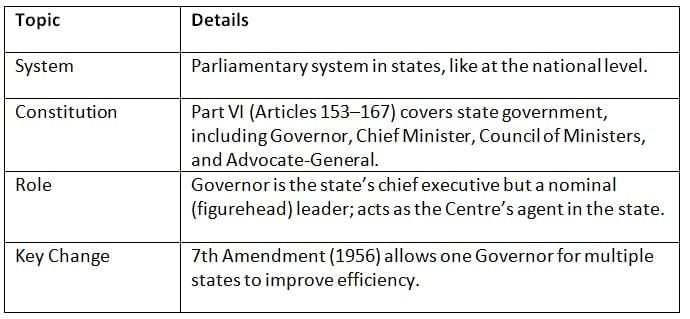 The Governor is a symbolic state head, representing the Centre, with limited real power. The 1956 amendment made governance more flexible.
The Governor is a symbolic state head, representing the Centre, with limited real power. The 1956 amendment made governance more flexible.
Appointment of the Governor
The President appoints the Governor, and the role is an independent constitutional position, not a job under the Centre. Direct elections were avoided to keep the Governor neutral and prevent conflicts.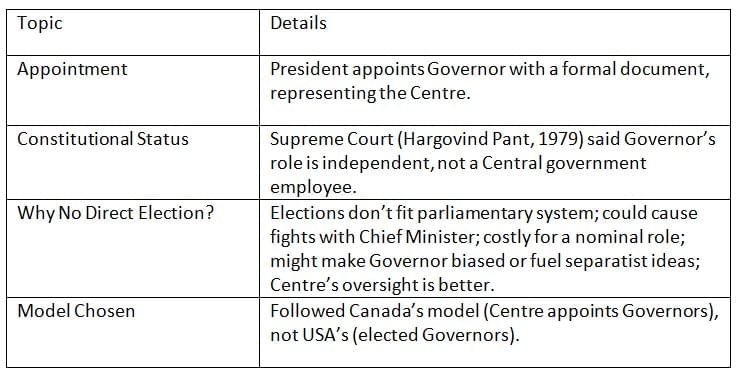
Governors are appointed by the President to stay neutral and avoid conflicts, following Canada’s model for a unified system.
Qualifications, Oath, and Conditions
Governors need specific qualifications, must take an oath, and follow certain rules to ensure they serve fairly and independently.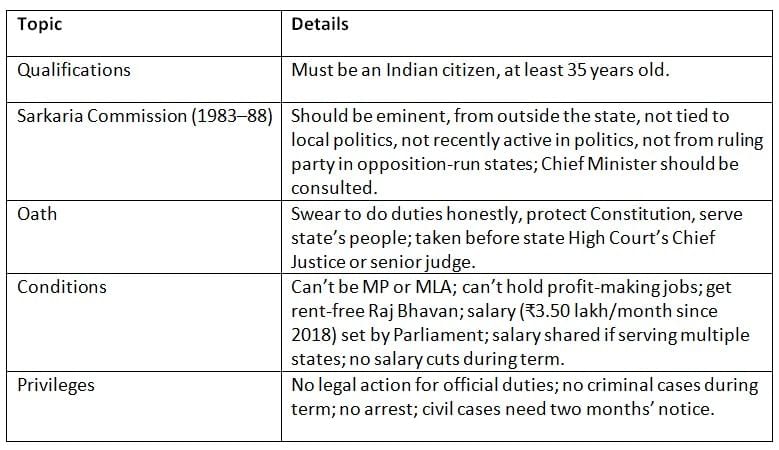
Governors must be qualified, neutral, and take an oath to serve fairly. Their salary and protections ensure independence.
Term of Office
Governors serve for five years, but the President can remove or transfer them anytime. There’s no fixed job security.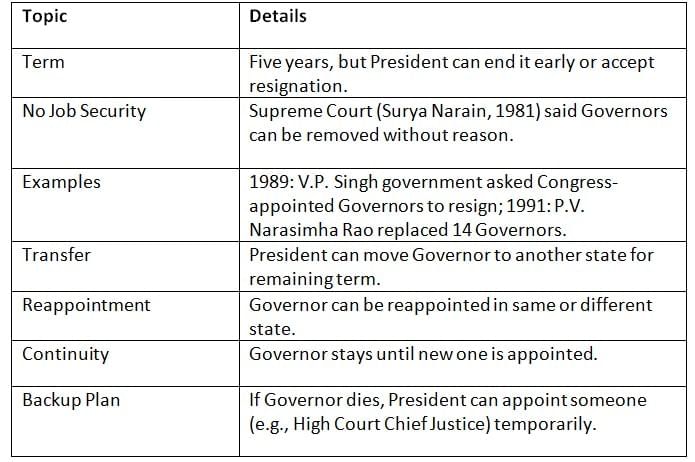
Governors have a flexible five-year term, but the President can remove or transfer them, ensuring Central control.
Powers and Functions of the Governor
Governors have powers in executive, legislative, financial, and judicial areas, but they’re limited compared to the President’s powers.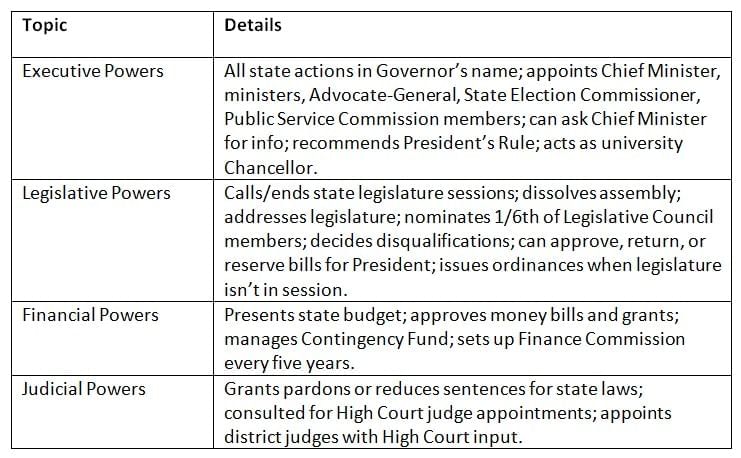
Governors handle state administration, laws, money, and justice but have no military or emergency powers like the President.
Discretionary Powers
Governors can act on their own judgment in some cases, unlike the President, who always follows ministers’ advice.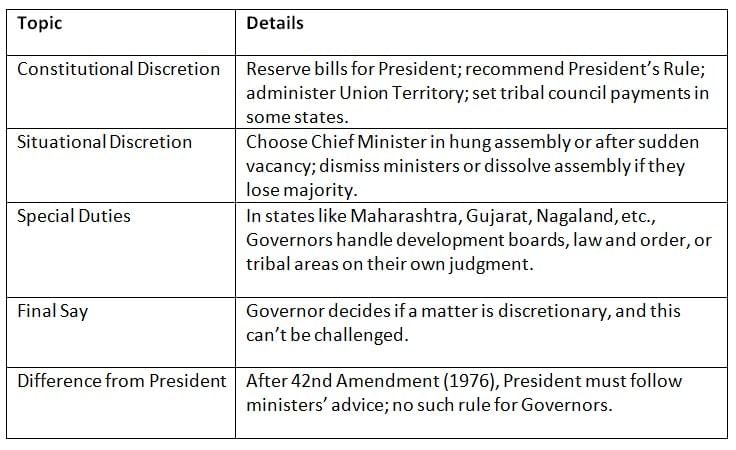
Governors have unique powers to act independently in specific situations, giving them flexibility but also room for controversy.
Issues in Governor’s Functioning
The Sarkaria Commission pointed out problems with how Governors work, like inconsistent decisions and possible bias.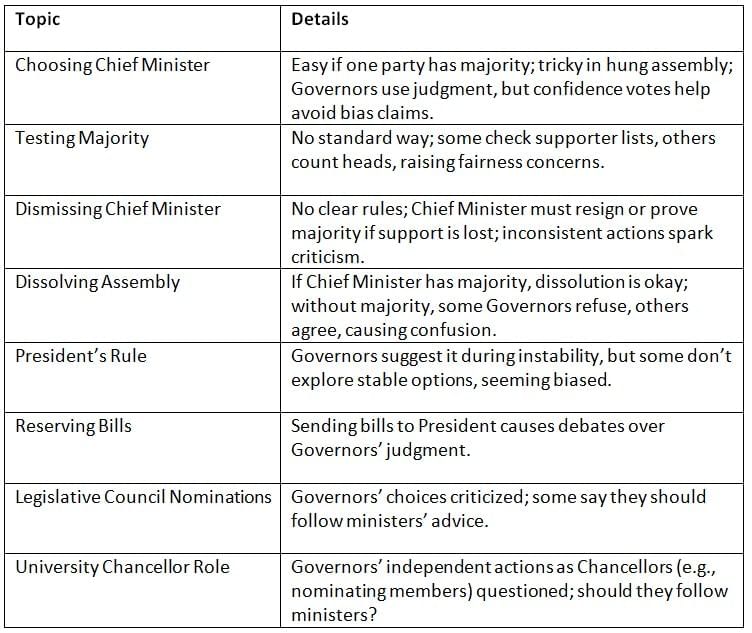
Governors’ inconsistent actions in key roles like choosing leaders or recommending President’s Rule raise concerns about fairness and bias.
Timeline of Key Events
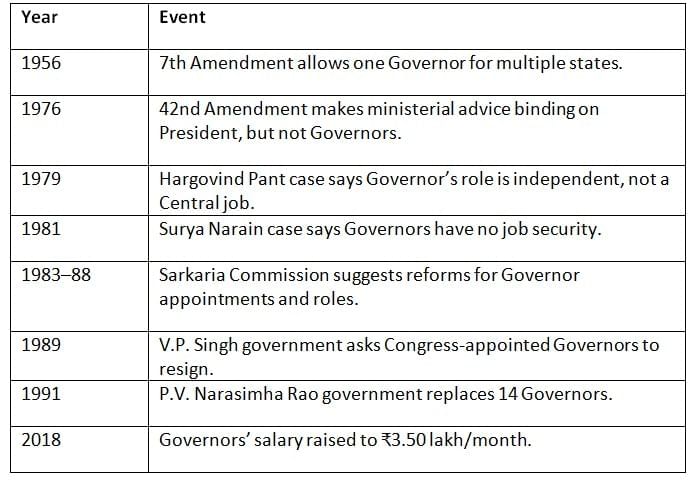
Conclusion
This chapter shows the Governor’s role as a symbolic state head and Central representative in India’s parliamentary system. While Governors have powers in administration, law-making, finance, and justice, their discretionary actions can cause controversies. The Sarkaria Commission’s suggestions aim to make their work fairer. Understanding the Governor’s role is key to seeing how states and the Centre work together in India’s democracy.
|
142 videos|777 docs|202 tests
|
FAQs on Cheat Sheet: Governor - Indian Polity for UPSC CSE
| 1. What are the key qualifications required for someone to be appointed as a Governor in India? |  |
| 2. What is the significance of the oath taken by the Governor upon taking office? |  |
| 3. How long is the term of office for a Governor, and under what circumstances can it be terminated? |  |
| 4. What are the discretionary powers of the Governor, and in what situations can they be exercised? |  |
| 5. What are some common issues faced in the functioning of Governors in India? |  |
















